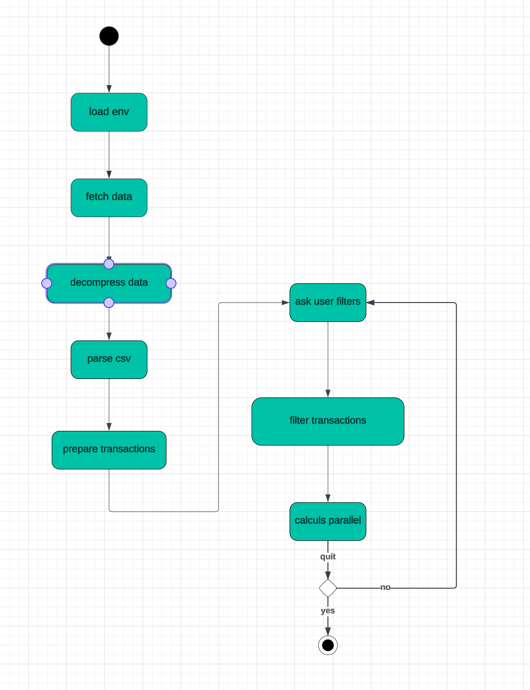In today's data-driven world, being able to extract insights from large datasets is a marketable and highly sought-after skill. This project gives us experience in data collection, preprocessing, and analysis, which are fundamental skills applicable in numerous industries.
We designed this ZIO/Scala project to process and analyze transaction data from the real estate market of France. It fetches data from a specified URL, a public government URL (https://files.data.gouv.fr/geo-dvf/), decompresses it if necessary, parses the data, and applies various filters to extract meaningful insights.
We were interested in exploring different kinds of metrics and potentially observing the evolution of France's real estate market through the years, especially during the ongoing housing crisis. This tool also aims to provide a view of France's disparities and housing scarcity.
- Scala
- sbt (Scala Build Tool)
- A
.envfile containingDATA_URL, START_YEAR, END_YEAR, and optionallyCSV_SEPARATOR - A fairly good internet connection (we're fetching approximately 3 Go of data)
git clone https://github.com/YanisBmdn/eScalaDe.git
cd escaladeCompile the project using sbt:
sbt runFollow the prompts to input filters and view the computed metrics based on the transaction data.
Run unit tests using sbt:
sbt testAfter compiling and launching the app, the user will be prompted to input different values to filter data
Then, the user will be able to input values, or let the fields empty
After some time (depending on the quantity of data), the program will print the results of the computed metrics of the data filtered by the user criterias
- loadEnvVars: Loads necessary environment variables.
- fetchData: Fetches and processes data from a URL.
- decompressGzippedData: Decompresses gzipped data streams.
- parseCsvLine: Parses a line of CSV into a Transaction object.
- loadTransactions: Loads transactions for a range of years.
- validateTransaction: Validates and filters transactions.
- filterTransactions: Applies filters to transaction streams.
- computeMetrics: Computes various metrics from transaction data.
The workflow is illustrated in the following Functional Schema section.
src/main/scala:
- example/helpers: Contains utility classes and functions for environment configuration (Env), HTTP utilities ( Http), and parsing logic (Parser).
- example/models: Contains domain model classes like Location, Metric, RealEstate, Transaction, and UserFilters.
- example/services: Defines business logic and service layer components, including Filters, Sinks, and Transactions.
- example/types: Contains type definitions, type aliases, or domain-specific types.
Main: The main application entry point.
src/tests: Includes unit tests for our Scala code.
In our models package, we aimed for a balance between comprehensiveness and simplicity. We introduced a number of case classes to represent key elements of real estate transaction data, ensuring each data type is encapsulated clearly. Additionally, we incorporated Opaque Types to provide strong typing, enhancing code clarity and safety. This approach allows us to handle complex data while maintaining readability and reducing the potential for type-related errors.
Data fetching is the most resource-intensive aspect of our project, which we tried our best to optimize. By cleaning
data and using user-input-based filters, we drastically reduce the dataset for processing. We also maximized
parallelization in the computeMetrics method, improving the time taken to run all computations.
- ZIO: A functional programming library for Scala, providing concurrency and asynchronous programming features.
- ZIO-Streams: An extension of ZIO for managing and processing data streams.
- ZIO-HTTP: Used for making HTTP requests and handling web-related operations.
- Dotenv-Java: Helps in loading environment variables from a .env file.
- Munit and Munit-ZIO: The testing framework for Scala, with Munit-ZIO extending its use with ZIO.
We faced significant challenges in this project, particularly with Scala and ZIO, as these were new to us. We are proud of the features we implemented, which were largely in line with our initial goals. Learning to think functionally was a substantial shift, especially without prior experience in functional languages.



